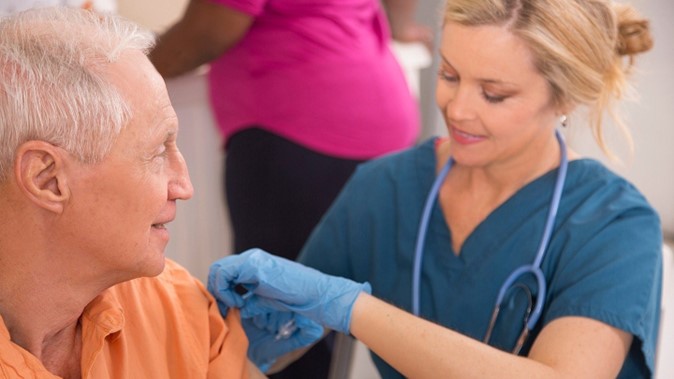A public health nurse is developing protocols to use in emergency shelters following a disaster. Which of the following interventions should the nurse include as a secondary prevention strategy for clients who survive a disaster?
Compiling resources available to transition individuals from shelters to a home
Interviewing shelter residents to determine the effectiveness of coping behaviors
Publishing a listing of shelter locations in local media sources
Providing age-appropriate activities for shelter residents
The Correct Answer is B
B. Interviewing shelter residents to determine the effectiveness of coping behaviors: This is a secondary prevention strategy as it focuses on early identification of stress-related conditions or mental health concerns in disaster survivors. By assessing coping behaviors, the nurse can detect maladaptive responses and intervene early to prevent further mental or physical health complications.
Incorrect:
A. Compiling resources available to transition individuals from shelters to a home: This is a tertiary prevention strategy because it focuses on helping individuals recover and rebuild their lives post-disaster.
C. Publishing a listing of shelter locations in local media sources:
This is a primary prevention strategy as it involves preparedness and prevention. Providing information about shelter locations can help individuals seek immediate refuge during a disaster, reducing exposure to harm.
D. Providing age-appropriate activities for shelter residents: This intervention aligns with tertiary prevention, as it aims to promote emotional recovery and well-being for individuals who have already experienced a disaster. Age-appropriate activities help reduce stress and enhance coping for shelter residents.
Nursing Test Bank
Naxlex Comprehensive Predictor Exams
Related Questions
Correct Answer is B
Explanation
The correct answer is choice B, "Immunizing the clients against influenza." This is the priority for the nurse to include because older adults are at increased risk for complications from influenza. Immunization against influenza can help prevent serious illness and death in this population. While exercise, a low-fat diet, and dental examinations are important health promotion strategies for older adults, they are not as high a priority as influenza immunization. 
Correct Answer is B
Explanation
In a mass casualty incident (MCI) like a train crash, triage is based on the severity of injuries and likelihood of survival using the START (Simple Triage and Rapid Treatment) system. Clients are categorized as Immediate (Red), Delayed (Yellow), Minor (Green), or Expectant (Black).
A. A client with a humerus fracture and a 2+ radial pulse (Yellow - Delayed): The client is stable and not the highest priority for immediate transport.
B. A client with full-thickness burns over 30% TBSA (Red - Immediate): This client has life-threatening injuries requiring urgent treatment for airway support, fluid resuscitation, and burn care.
C. A client with agonal respirations and fixed, dilated pupils (Black - Expectant): This client is unlikely to survive even with treatment, so in an MCI, resources should be allocated to those with a higher chance of survival.
D. An ambulatory client with a nosebleed and dizziness (Green - Minor): This client is walking wounded and can wait for medical care.
Whether you are a student looking to ace your exams or a practicing nurse seeking to enhance your expertise , our nursing education contents will empower you with the confidence and competence to make a difference in the lives of patients and become a respected leader in the healthcare field.
Visit Naxlex, invest in your future and unlock endless possibilities with our unparalleled nursing education contents today
Report Wrong Answer on the Current Question
Do you disagree with the answer? If yes, what is your expected answer? Explain.
Kindly be descriptive with the issue you are facing.
